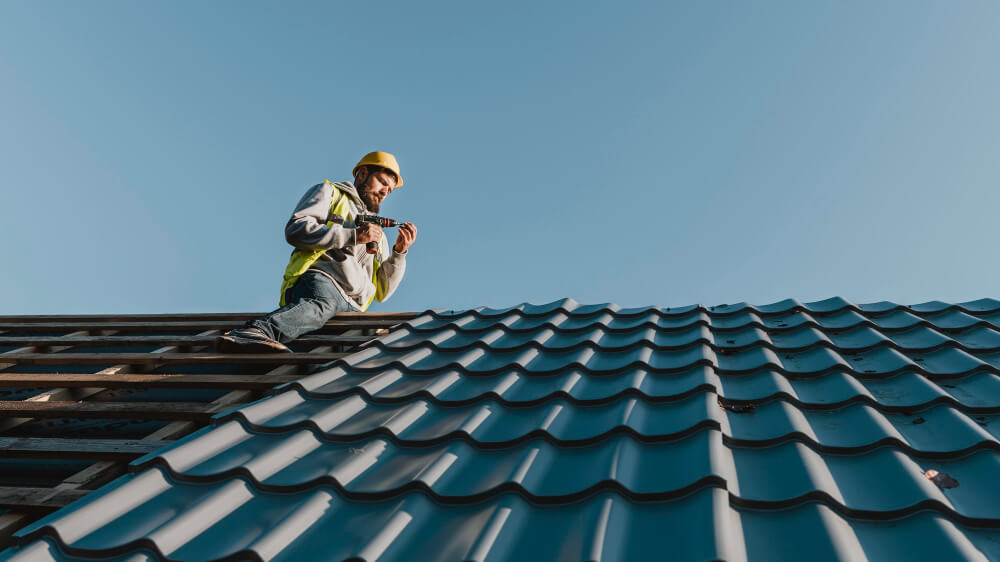Picking roofing materials isn’t exactly a “fun” decision—unless reading warranty fine print gets you excited. Still, it’s one of those choices that hits your wallet, your home’s look, and your comfort levels for the next 20-50 years.
Let’s break it down clearly. No fluff. No sales talk. Just the real pros, cons, and things people often wish they’d known before choosing.
Asphalt Shingles: The Crowd Favorite
Why Everyone Loves Them:
They’re affordable, easy to install, and available just about anywhere. Chances are, your neighbor has them. Your neighbor’s neighbor probably does too.
Pros:
- Budget-friendly
- Variety of colors and styles
- Decent lifespan (15–30 years)
- Easy to repair
Cons:
- Can crack in extreme temperatures
- Not the best for high-wind or hurricane zones
- They tend to fade with age
Worth Knowing: About 80% of homes in the U.S. have asphalt shingles. That’s not a coincidence—it’s because they’re the “good enough” option for many budgets.
Metal Roofing: The Tough Cookie
Why It’s Rising in Popularity:
Modern metal roofs aren’t your granddad’s tin shed. Today’s styles can mimic shingles, slate, or even wood shakes—with a lot more staying power.
Pros:
- Lasts 40–70 years
- Reflects heat (hello, lower energy bills)
- Fire and wind resistant
- Can be made from recycled materials
Cons:
- Higher upfront cost
- Can be noisy during heavy rain or hail (unless insulated)
- Dents more easily than you’d think (hail, tree branches, your kid’s baseball)
Quick Stat: Metal roofing can cut energy costs by 10–25%, especially in hot climates.
Also Read: Roof Repair vs. Roof Replacement: What’s Best for Your Home?
Clay Tiles: The Mediterranean Mood
Why It’s a Vibe:
They scream charm. Clay tiles are popular in the Southwest and coastal regions—not just for looks but for performance in hot, dry areas.
Pros:
- Extremely durable (50+ years)
- Fire-resistant
- Low maintenance
Cons:
- Heavy (you may need extra structural support)
- Can crack underfoot or during hailstorms
- Pricey—both for materials and installation
Heads-Up: One dropped hammer during installation can cost a whole tile. Tread lightly—literally.
Concrete Tiles: The Clay Alternative
Why Some Prefer Them:
They give the look of clay tiles without quite the same price tag. Also tougher when it comes to impact.
Pros:
- Long lifespan
- Fire-resistant
- Withstands extreme weather
Cons:
- Still heavy (hello again, structural support)
- Can absorb more water than clay, leading to mold issues
- Color fades over time
Reality Check: Concrete isn’t immune to breakage. But it’ll take a bigger hit than clay before cracking.
Slate: The Long Hauler
Why It’s Considered Elite:
Slate roofs can outlive the original homeowner. No joke. It’s natural stone, and it shows.
Pros:
- Lifespan of 75 to 100 years
- Fireproof, waterproof, everything-proof
- Gorgeous, historic look
Cons:
- Extremely heavy
- Very expensive (materials and installation)
- Repair requires skilled labor
Pro Tip: If you want to use slate, get your home inspected first. Many houses can’t handle the weight without upgrades.
Wood Shingles and Shakes: Rustic, But Risky
Why It’s Chosen:
They offer a cozy, natural look. Some people are just drawn to the charm of real wood.
Pros:
- Strong curb appeal
- Can last 30–40 years with proper care
- Eco-friendly if sourced responsibly
Cons:
- Fire hazard unless treated
- Needs regular maintenance (moss, rot, insects)
- Not always allowed in fire-prone zones
Personal Note: Wood roofs in rainy climates are like white carpets with toddlers. Beautiful—briefly.
Check Out: How to Know When It’s Time to Replace Your Roof
Synthetic Roofing (Rubber, Plastic, Composite)
Why It’s Gaining Fans:
It imitates other materials (slate, wood, etc.) but weighs less and usually costs less too.
Pros:
- Lighter than natural materials
- Typically lower cost than slate or wood
- Often impact- and fire-resistant
Cons:
- Doesn’t last as long as top-tier materials
- Appearance can look artificial close-up
- Some products still haven’t stood the test of time
Worth Asking: What’s the warranty? With synthetic, it can vary wildly.
Green Roofs: For the Eco-Warrior
Why Some Go All In:
Plants on your roof? It’s more than aesthetic. These “living roofs” regulate temperature, absorb rainwater, and support biodiversity.
Pros:
- Reduces urban heat
- Excellent insulation
- Helps with stormwater management
Cons:
- Needs structural reinforcement
- Ongoing maintenance (weeding a roof isn’t for everyone)
- Expensive to install
Stat That Sticks: Green roofs can reduce indoor temps by up to 5°F in summer.
Final Thoughts: Choosing What Works for You
Every material has tradeoffs. Asphalt shingles might be the most affordable, but slate will outlive your grandkids. Metal can save on energy but might rattle your nerves in a storm. Clay tiles are timeless—unless you’re footing the bill for new roof framing.
Ask yourself:
- What’s my budget—today and long-term?
- Is my home in a high-wind, fire, or snow zone?
- Do I care more about looks, longevity, or energy savings?
And if you’re unsure, bring in a pro. A good roofing contractor will help you weigh options without pressure (and hopefully without using words like “bespoke” or “realm”—because yikes).

